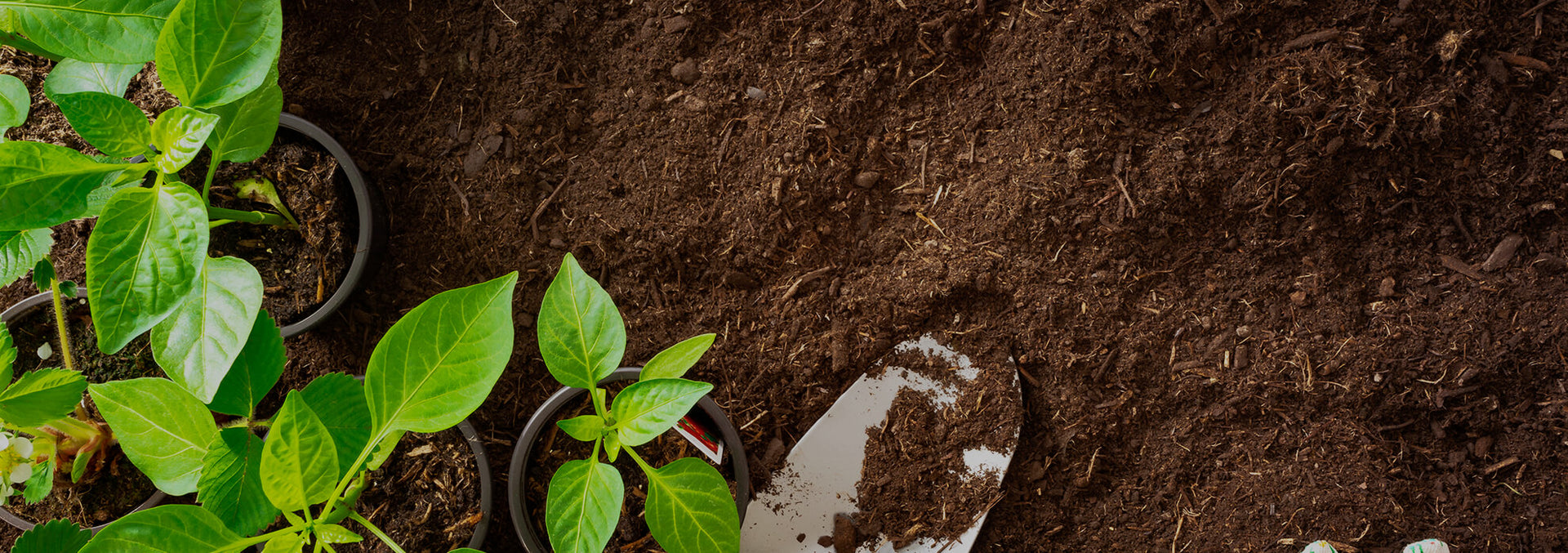
What To Plant In The Winter
Winter is the new spring? It’s not too late. Today we are going to share 10 veggies and herbs that you can plant right now!
While other areas are deep in their winter, in zone 9, OUR mild winters provide the perfect moment to plant before it gets too frosty. In our area, the first frost is projected to be on Dec 15th, but you will need to check for your own area to see what planting time is best for your garden!
Adding John&Bobs soil products to your vegetable and herb gardens are a sure-fire way to make sure your soil is lively, rich and fertile! - And Lively soil can help plants tolerate cold better.
1. Beets:

Beets can be planted up to six weeks before your first frost. Sow seeds ½-inch deep and 1 to 2 inches apart in rows that are about 12 to 18 inches apart. After sowing, cover the seeds with a thin layer of soil. Make sure the soil remains moist for optimal germination.
Beets are a fantastic source of vitamin B9 which helps promote cell growth and function.
2. Brussels Sprouts:

For warmer zones like ours, we can usually expect our first winter frost around the middle of December. Brussels need rich, lively soil that is kept consistently moist for optimal growth.
Plant seeds 3-4 inches apart or plant seedlings 18-24 inches apart. Brussels are a great source of vitamin C and vitamin k!
3. Ornamental Cabbage:

Best for slightly warmer winters like zones 8-10 and should be planted in rich soil and kept moderately moist. These beauties will grow all winter long and keep your garden looking colorful and vibrant.
4. Carrots:

Carrots are a great choice for gardeners from beginner to experienced. They are very easy to grow, and in our zone (9) they can be grown unprotected through the winter. Carrots are a delicious source of fiber, vitamin K1, potassium, and antioxidants.
5. Garlic:

Who doesn’t want more garlic in their life? It is best to plant ‘soft-neck’ garlic during the cooler months (however, hard-neck garlic can be planted if they are prepped in the fridge prior to planting). Growing garlic is fairly easy, take individual cloves from a garlic bulb a few days before planting. Then, plant cloves 4 to 8 inches apart and 2 inches deep, in their upright position with the pointed end facing up. Plant in rows spaced 6 to 12 inches apart. Garlic is not only a great addition to nearly anything savory, but it has also been proven to help lower blood pressure and cholesterol!
6. Green Onions:

These fast growing onions are easy to grow and should be started from seeds in our zone during this time of year. Green onions are hearty through the winter, and need very little protection from cold weather. Green onions are an unassuming superfood that is full of vitamin K, C, A and potassium!
7. Kale:

Kale is another great option for cold-weather planting. There are many varieties that will do well in the winter, including Dwarf Siberian, Blue Scotch Curled Kale, and Red & White Russian.
Kale is extremely cold-tolerant, and they really do not need any cold protection. They thrive even through single digit temperatures, and the best part of all - you can use the “Cut, leave and cut again” method for harvesting!
8. Mustard Greens:

Though Mustard Greens can tolerate very cold weather, they must have time to germinate before the first winter frost! For easier and quicker harvest, you can plant transplants instead of waiting for seeds to germinate. Mustard greens should be planted 12 to 18 inches apart in an area that gets sunlight (even in winter). They also prefer soil that is lively, fertile and well-draining. Mustard Greens pack a pepper punch of flavor and contain several B vitamins and vitamin K!
9. Radish:

Radish is a great winter-growing plant. This is a root vegetable that grows rapidly, only taking about 5-10 days to germinate and 3-4 weeks before harvesting! Place seeds about 1-2 inches beneath soil (and be sure to till the soil first). This is a plant that does not need fertilizer rich soil to grow, and will do better in soil that does not have high amounts of nitrogen. Radishes are a snappy, peppery & fresh root that adds a great crunch to meals - it also carries antioxidants, vitamin C and calcium!
10. Spinach:

Spinach can be planted in Nov. or Dec. and is very cold tolerant. Spinach is another fast growing crop, taking only about 6 weeks from seed to harvest!
Simply place seeds 1/2 of an inch deep every 2 inches and cover with 1/2 inch of soil. Plant in rows 12 to 18 inches apart or sprinkle over a wide row or bed. Spinach requires very little to grow, water once weekly and you should enjoy a proud harvest! Spinach famously contains high amounts of iron, as well as vitamin K, C and calcium!
Bonus: Herbs!
Here are some great winter growing herbs that you can plant from seed:
- Oregano: Plant seed in NOV/DEC. - 8-10 days to sprout. 85 days to mature.
- Parsley: Plant seed NOV/DEC. - 15-20 days to sprout. 70-90 days to mature.
- Chives: Plant seed end of NOV/mid DEC. - 7-14 days to sprout. 84 days to mature.
- Thyme: Plant seed until end of DEC. - 14-20 days to sprout. 80 days to mature.
- Rosemary: Plant seed by JAN. - 15-25 days to sprout. 90 days mature.
- Mint: Plant seed by early FEB. - 10-16 days to sprout. 90 days to mature.

Oregano - Plant NOV/DEC

Parsley - Plant NOV/DEC.

Chives - Plant end of NOV/mid DEC.

Thyme - Plant until end of DEC.

Rosemary - Plant by JAN.

Mint - Plant by early FEB.
